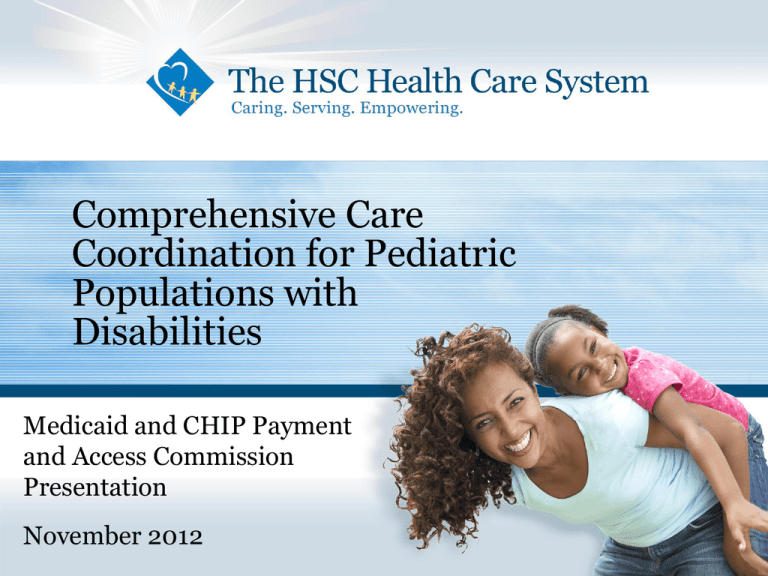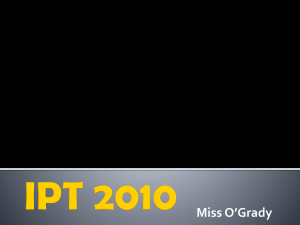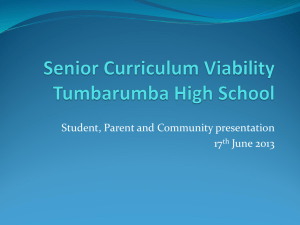2% - Association for Community Affiliated Plans ACAP
advertisement

Comprehensive Care Coordination for Pediatric Populations with Disabilities Medicaid and CHIP Payment and Access Commission Presentation November 2012 HSC Foundation National Youth Transitions Center Special Needs Consulting Services, Inc. HSC HealthCare System Health Services For Children with Special Needs HSC Pediatric Center HSC Home Care, LLC 2 The HSC Health Care System Integrated pediatric and young adult special needs health care system Non-profit; 130 years old, 6,000+ served in direct services; national reach broader HSCSN-DC only (and out-of-state placements) HSC Pediatric Center- DC, MD, VA HSC Home Care-DC, MD Special Needs Consulting Services- national National Youth Transitions Center* age 14-26 3 Health Services for Children With Special Needs (HSCSN) Care coordination plan for individuals up to age 26 in SSI and related categories via Medicaid CASSIP A 20 year old program with longitudinal data Now 5,400+ members/ 60%+ of eligible Comprehensive coverage with no carve-outs At risk contract with risk share District has 14.7% with special needs vs. national average of 13.5% 4 Organization Approach Integrated care management incorporating social care management to help families dealing with disabilities achieve their highest level of independence Model includes behavioral, long term care and recovery model interventions Network more community and social focused than a typical MCO All members receive care management and outreach Linked to a special needs focused delivery system 5 HSCSN Value Equation Approach care delivery with granularity; initial home and family assessment—across continuum Aggressive family support addressing social determinants; support groups include Male Caregivers and others 67% of plan employees have direct engagement roles with members Active peer to peer support, engagement with schools, governmental agencies and NGO’s 6 Enrollment By Diagnosis 7 Caregivers A vital factor for children Affected by social determinants 79% are biological mothers 10% are grandmothers 1/5 < 30 years of age Housing is a major barrier Foster care system is major decision maker for 2% of members 8 Major Outcomes Better access to Primary and Specialty Care than FFS 47% increase in access to dental services Cumulative rate increases 55% below commercial insurance PMPM cost norms from 1996-2009. From 2003-2008 costs increases were 17% for HSCSN population compared to 23% in the District and 21% nationally for all Medicaid SSI. 55% decrease in ICFMR and LTC residential use 50% decrease in use of out-of-state facilities 9 Additional Analytic Findings 2,602 members continuously enrolled during 20082010. Group was 68% of all members and 58% of incurred medical costs during timeframe. PMPM for this group increased only 2.5% annually during 2008-2010 Providers with 35 - 50 patients have highest EPSDT rates (92% compliance) Providers with 150 -250 patients have lowest EPSDT rates (77% to 64%). Equal to very small panels e.g. 1 10 Residential Treatment Utilization 7000 6000 5000 4000 3000 2000 RTC Annualized Days/1000 Members: (Days / MemberMonths x 1000 x 12 months to annualize) 1000 0 11 2010 NCQA Quality Compass Results National Comparison: 46 out of 90 reported measures SN exceeded the both the national Medicaid average and ACAP plan average in 36 measures or just under 80% of HSCSN’s reported measures 12 Lessons/Recommendations Cover social determinant interventions outside of the pure clinically based realm Support capacity building to support NGOs in affecting above re: data, reporting and outcomes focus [e.g. managed care rigor] Stimulate development of a “real provider systems of care” rather than just an “insurance” approach Use ASO arrangements whenever possible 13 Lessons/Recommendations Remove risk requirements beyond plan control Build granular best practices, e.g. Hand-offs between medical to behavioral care Use defined structures to engage family, providers, schools, NGOs, and government Define “care coordination” for all stakeholders Cover entire family and not just the member Engage individuals with disabilities in solutions 14 Contact Information John Mathewson Executive Vice President HSC Foundation 202-454-1236 jmathewson@cscn.org 15











